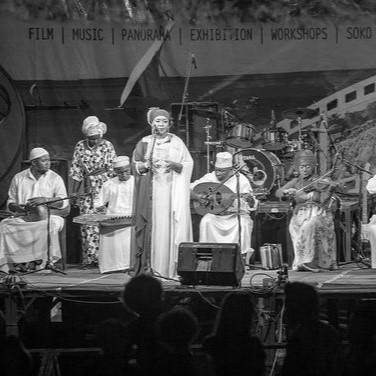Taarab music is a captivating blend of Middle Eastern and East African influences and is testament to the cultural exchanges that have shaped the Swahili coast.
Originating in the late 19th century, taarab emerged as a unique genre that encapsulates the diverse histories and traditions of the region. This musical style is characterized by its intricate melodies, poetic lyrics, and a wide array of instruments, ranging from the oud and qanun of the Arab world to the local drums and percussion of East Africa. The result is rich of sounds that entertains but also conveys the complex socio-cultural narratives of its people.
The roots of taarab can be traced back to the Zanzibar Sultanate, where the Sultan’s court fostered a melting pot of cultural influences. Musicians from the Middle East, particularly from Egypt and Yemen, brought their musical traditions, which began to intermingle with the local sounds of Zanzibar.
Over time, these interactions gave rise to a new genre that incorporated the poetic and melodic sensibilities of Arabic music with the rhythmic and tonal elements of African music. The adoption of Swahili as the primary language for taarab lyrics further anchored this genre in the local context, allowing it to resonate deeply with the people of East Africa.

As taarab evolved, it became more than just a form of entertainment; it became a medium for social commentary and a vehicle for expressing the aspirations and struggles of the community. The lyrics often address themes of love, betrayal, social justice, and everyday life, reflecting the lived experiences of the Swahili people. In this way, taarab music serves as both a mirror and a catalyst for social change, providing a platform for dialogue and reflection. The genre’s adaptability has also allowed it to remain relevant in contemporary times, with modern taarab incorporating elements of hip-hop, reggae, and other global musical styles to appeal to younger audiences.
The cultural significance of taarab extends beyond its musicality; it represents a historical record of the interactions and exchanges that have defined the Swahili coast. Through its fusion of Middle Eastern and East African elements, taarab embodies the spirit of cultural hybridity and the resilience of a community that has thrived on diversity.
This genre not only preserves the heritage of the past but also continues to evolve, bridging generational and cultural gaps. As we listen to the evocative strains of taarab music, we are reminded of the enduring power of cultural exchange and the ways in which music can transcend boundaries to unite people across different backgrounds.

